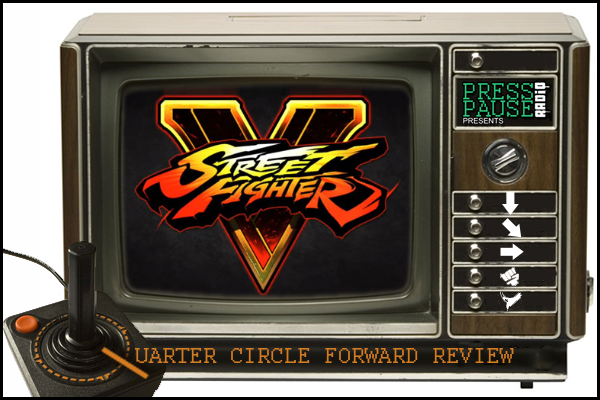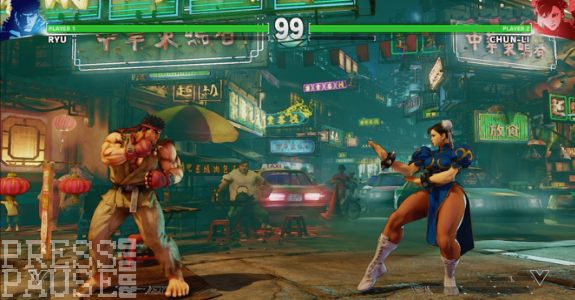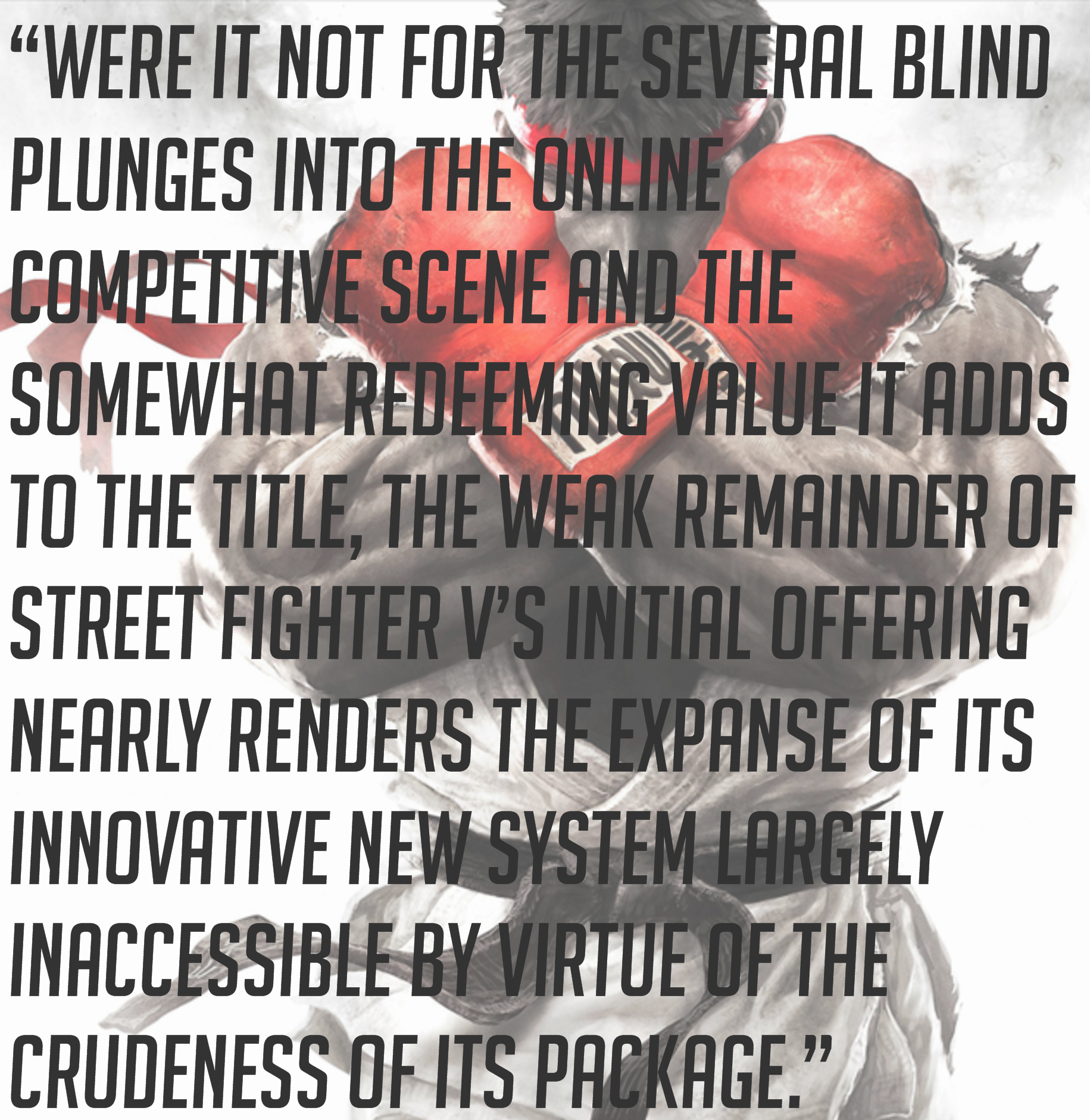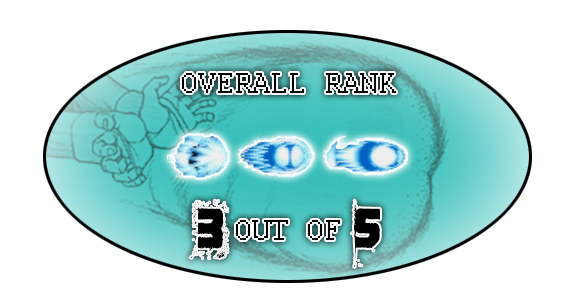QCF: Street Fighter V

 hen Street Fighter IV was initially released, it far exceeded all expectations among its casual and hardcore fans—and even then, it didn’t last long before Capcom squandered a majority of that good will, with some ill-advised decisions towards the direction of the entry, and it’s content.
hen Street Fighter IV was initially released, it far exceeded all expectations among its casual and hardcore fans—and even then, it didn’t last long before Capcom squandered a majority of that good will, with some ill-advised decisions towards the direction of the entry, and it’s content.
Decisions that have prompted the brand to take a different path with the fifth entry, a path that will better speak to the modern sensibilities of content expansion for games today.
Sadly though, Capcom screwed the pooch right out of the gate on this one, and the results make for a solid core game, that’s trapped within a lazy framework that does very little to drive the engagement factor of that core—something that feels oddly unfinished, and rushed.
Giving credit where credit is due, the subtle changes applied to the rhythm of Street Fighter’s combat mechanics definitely work to refresh the nuances of its predecessor’s formula that we’ve been accustomed to for the last 7 years. Street Fighter V is much faster; not Marvel Vs Capcom 3 levels fast mind you, but more frenetic in its intensity, and impressively, without any compromise to the tactical nature of its fundamentals as well.

While the mechanics to IV possessed a complex degree of counter-defensive dynamics through its Focus Attack feature, the various tactics and strategies that stemmed from it were arguably the same across the board; with factors like spacing, and timing are taken into account, you could use the same defensive strategies with just about any fighter from the roster. Extraneous elements like individual hit-boxes, or hurt-boxes are still unique between the competitors notwithstanding, but the evasion game was equivocally the same all around—Street Fighter V makes good to overhaul this tired design.
By eliminating the Focus attack all together, this next-gen sequel opts for a simpler counter system that scales the severity of the kickback damage dished out instead, gauging these blows between a normal counter, and a crush counter in the process.
 That’s not to say that this new fighting system is entirely founded upon a reflexive-heavy ebb and flow; there’s still a some-what deeper parrying system to fiddle around with too—the catch being that it plays a role within the new “risk/reward” direction that Capcom has taken with Street Fighter V.
That’s not to say that this new fighting system is entirely founded upon a reflexive-heavy ebb and flow; there’s still a some-what deeper parrying system to fiddle around with too—the catch being that it plays a role within the new “risk/reward” direction that Capcom has taken with Street Fighter V.
The more advanced parrying options are now a part of the new V-Gauge, a meter that builds up from damage much like the previous Revenge Meter did; a bar made of three tiers, V-Reversals, V-Skills, and V-Triggers.
The V-Reversal is activated when players push forward, while simultaneously pressing all punch or kick buttons during a block, overpowering almost any attack with a strike that will cancel out the opponent’s original attack. The V-Skills command allow characters to perform unique techniques, like Ken’s Quick-step for example, is a maneuver that can close long-distance gaps within an instant, or a diversionary tactic that can misdirect opponents with a quick cancel, potentially concealing a bevy of surprise attacks if used during the right moment, and way. V-Triggers are the most complex of the three, draining the entire bar when executed, can lead to varying between the warriors; they can either yield a power-up to the fighter’s skill-set/performance, or it can be a distinctive move that’s capable of determining your favor of the battle within an instant.
The vast, yet comprehensible new depth to the familiar conventions of Street Fighter is indeed a breath of fresh air, but it’s still held back by one crucial flaw—it’s trapped under a shallow course of single-player options. In fact, Street Fighter V’s house of arms as a whole is embarrassingly unfinished; an unintuitive arrangement that lacks the essential resources to give players effective gameplay options they need to get the information needed to adjust to these new features.
Those who want to get intimate in a private single-player environment will be greeted with a half-assed story mode, a lazy survival gauntlet, or a bare-bones training mode that offers no sort of challenge system whatsoever—you know, those crucial lists of exercises that’re crafted with the intention of tutoring players the more advanced techniques within a practice setting? Yeah, there’s none of that here.
Oh, and about the online, it’s a bit lacking in its own way as well. You have your casual matches, and your ranked matches…and Battle lounge (which admittedly, is the most player-friendly method of casual online play for those who want get their feet wet before jumping in) but nothing else—I just listed all of it.
No king of the Mountain, or spectator, or tournaments—you’re just left with playing casually, or for bragging points. In addition to the underwhelming selection of online modes that SF V has to offer, the sustention to the system is even more disappointing—we’re talking little, to no matchmaking system in place to determine the appropriate skill pairings, and no conduct system enforced to penalize poor sportsmanship like rage quitting. These issues are just plain inexcusable, this isn’t new territory for Capcom, so its absence here is nothing short of lazy on their part.

Were it not for the several blind plunges into the online competitive scene and the somewhat redeeming value it adds to the title, the weak remainder of Street Fighter V’s initial offering nearly renders the expanse of its innovative new system largely inaccessible by virtue of the crudeness of its package.
As it stands now, this game just isn’t worth the $60 price tag, later maybe down the line it will be though. Capcom has stated that it will release crucial updates Street Fighter V, updates that will work to address most of the complaints I’ve made against it, and when that happens, then yes—feel free to fight the street again!
But for now, all I can say is that this game is only for those hardcore fighting game fans out there, and even then, I think they’re getting robbed out of a good Street Fighter experience themselves.






 GeorgieBoysAXE
GeorgieBoysAXE




